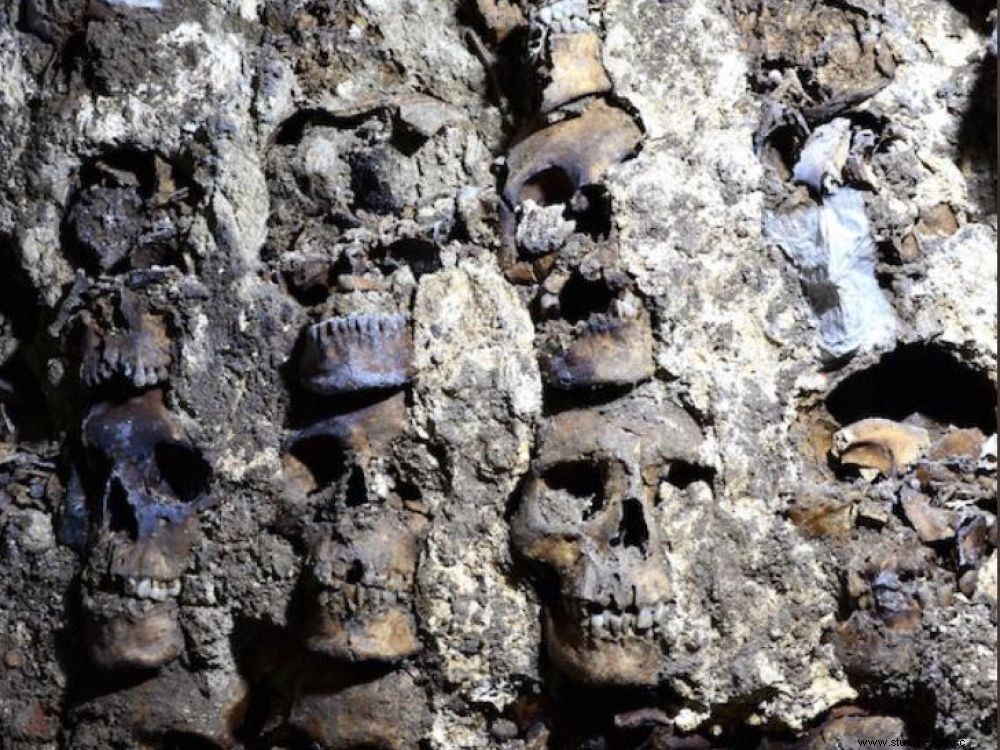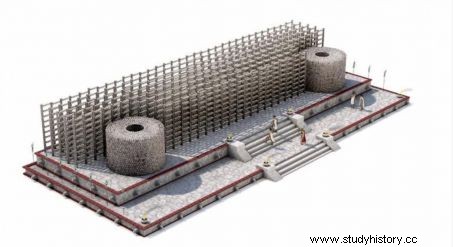Mexican archaeologists have unearthed new skulls linked to one of the towers of Huei Tzompantli in ancient Tenochtitlan, now Mexico City.

Elements of an Aztec tower made of human skulls, discovered near the Templo Mayor.
One hundred, 200, 600 skulls... The basements of Mexico City (Mexico), the ancient Tenochtitlan of the Aztecs, continue to deliver their macabre booty. All come from two sinister towers, discovered in 2017, and made up only of agglutinated human skulls as we mentioned on the site of Sciences et Avenir .
A construction over 30 meters long
On December 11, 2020, after descending to 3.5 meters underground, archaeologists from the National Institute of Anthropology and History (INAH) announced that they had unearthed 119 others from one of them. , which are added to the hundreds already exhumed for nearly six years from the "skull rack". They were mortared into one of the grim circular structures, 4.70 meters in diameter by 1.7 meters in height, which flanked both ends of the frightening tzompantli's facade. This construction, over 30 meters long, was located in the sacred enclosure of the Templo Mayor the most important Aztec ceremonial center, not far from the sanctuary dedicated to Huitzilopochtli , the god of the sun, the main deity of this powerful Mesoamerican people.

Reconstruction of the Huei Tzompantli of Tenochtitlan (Mexico) and its two towers of skulls. ©INAH
Towers made of lime and skulls
As we recalled in 2018, these terrifying towers had horrified the Spaniards when they took the Aztec capital in 1521. They had been described in historical chronicles, in particular that of Andres de Tapia, a companion of Hernan Cortes , the conqueror of Mexico:“[…] towers made of lime and skulls, without any other stone, and teeth outward as far as could be seen […] ”. The study of these remains has shown that, contrary to what was estimated until then, all these skulls did not belong only to defeated warriors or captives destined for sacrificial ceremonies. Skulls of children and women have indeed been identified.
Specialists consider that the construction of this building took place in three phases between 1486 and 1502, although human sacrifices were practiced in the Aztec city from its foundation in 1325. According to archaeologists, these fatal offerings could date back to the epoch of tlatoani Ahuitzol, the sovereign who then reigned over the territory of the Mexica (another name for the Aztecs). "Even though it's hard to conceive these days, these structures weren't meant to terrify but were part of a ceremonial whole meant to celebrate life!" , had explained to Sciences et Avenir, Gregory Pereira, research director of the Department of Archeology of the Americas, at the CNRS (UMR 8096). They constituted a form of pact between the living and their gods to ensure the continuity of the world.
